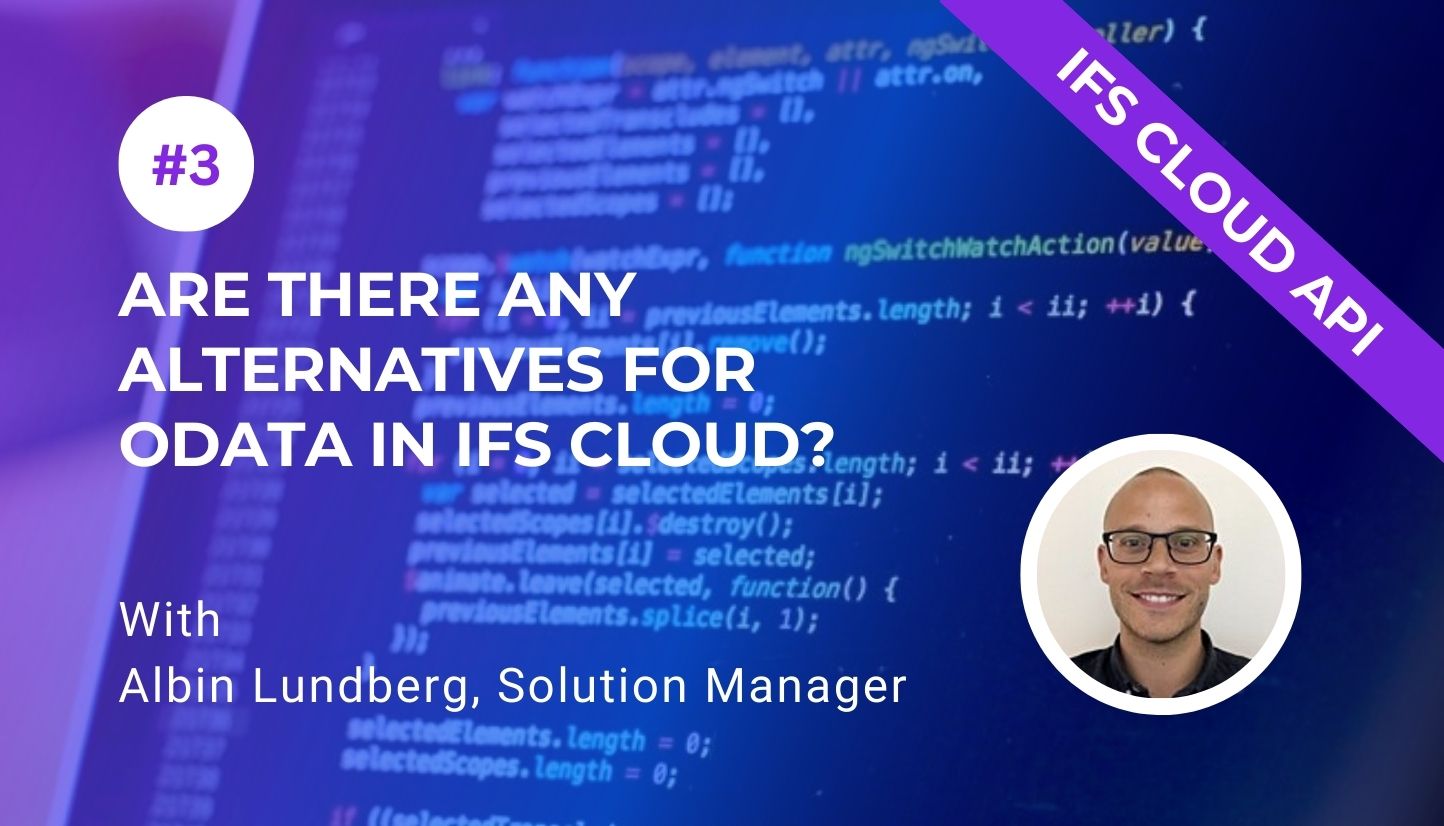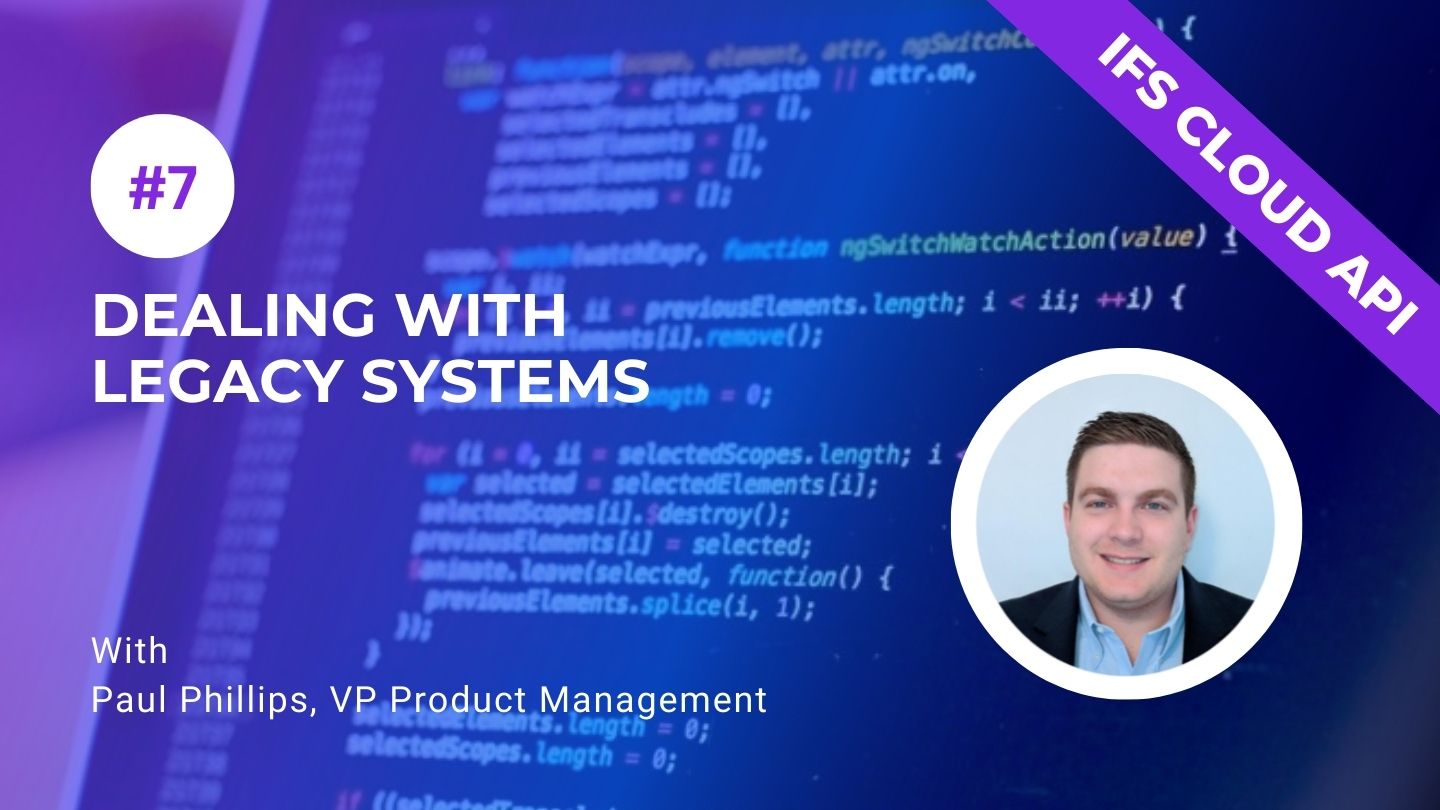 December 6, 2022
December 6, 2022  10 min to read
10 min to read A well-functioning business environment comprises a complex of operations that require highly efficient management at multiple levels. The reason for this comes from very stretched operational requirements. These can vary from industry to industry for specific business needs. Companies that want to comply with their growing industry demands are forced to exceed the capabilities of the ERP system to meet business demands and satisfy customers.
The most common approach to help companies manage their operations without complex ERP modifications is to rely on third-party applications that help run the business more sufficiently. These applications are functioning as different business solutions embedded as processes WMS, MES, CRM, Transport Management, Assets Management, Maintenance Systems, CMMS and many more. These system solutions must be integrated with ERP systems.
The system integration with ERP may function better or worse as many companies make very often insufficient approaches that are cannot fully align with ERP systems. The lack of good integration makes business practices much more difficult when it comes to running large-scale operations.
A typical ERP integration architecture and its negative consequences
Despite major differences between industries, typical ERP integration architecture combine third-party applications and systems connected to the ERP database. These systems (such as WMS, MES, CRM, CMMS , Asset management etc.) often offer complex functionality in their specific domains and collect a lot of data. The problem is that this data is stored in their independent databases. The portion of information that is then transferred do the ERP is very limited. It puts these systems in very isolated positions towards the ERP system.
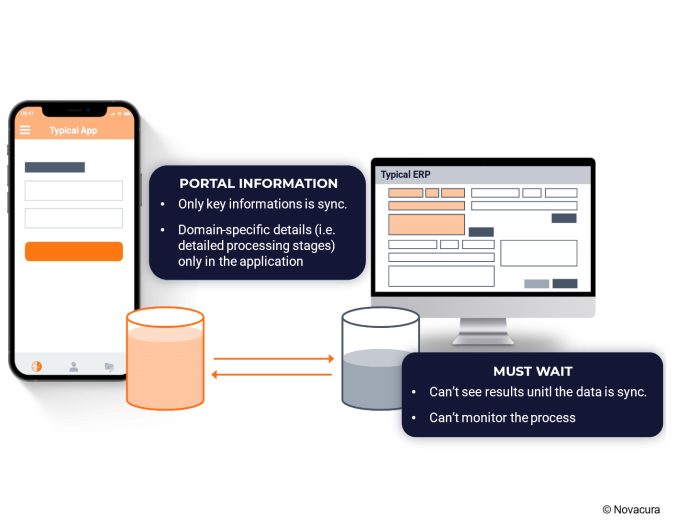
Negative results
We can see that third-party business solutions dedicated to ERP integration may generate many limitations that do not support operations as they assume. Here are some of the main limitations related to poor integration architecture:
- Incomplete data and low frequency – records from third-party applications may also not include all the important transactions registered on each stage of the process, and transmit data to the ERP with lower frequency. In the case when process involves a WMS, we can see staff accepting inbound goods by the dock in the warehouse and lately performing put-away. Warehouse personnel may record all mid-stages in processing goods in the 3rd party application (such as sorting damages and reporting various discrepancies), but no information about these mid-stages will be transferred to the ERP. ERP will only receive the final state.
- Business data withholding – data collected in operations is stored and processed in the third-party business system databases and it’s not completely transmitted to the ERP. The third-party system has its structure initially set up in the sense ofcore processes management and is not supported completely for ERP data retrieval.
As a result, companies have their limitations to obtain a complete view of entire operational performance from their typical data source, which is ERP system. The ERP users are partially „blind”, information that they see is very limited. In that case, the 3rd party business system improves processes in its domain, but in parallel cuts a gap in the ERP!
Proposed solution - Deep ERP integration
Most sufficient performance is only guaranteed by external applications that are deeply integrated with the ERP system without an external database. Data should be constantly transmitted in a real-time manner to the ERP system to avoid discrepancies and allow staff to have a constant view of the entire operational performance from each department.
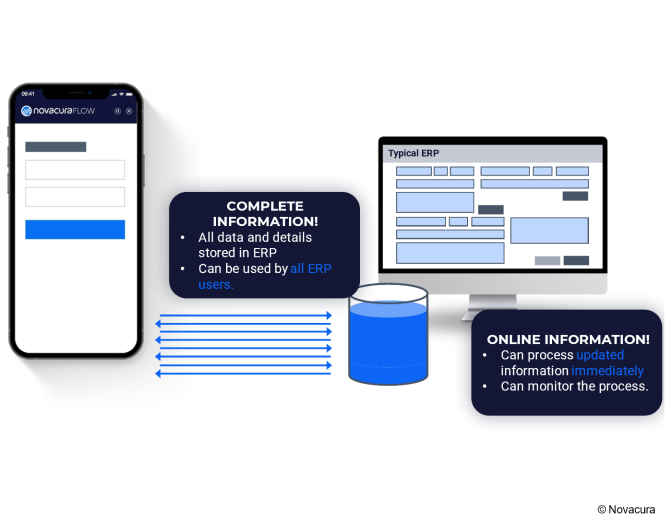
Positive results
Deep ERP integration may have positive impact for business from various industries independently on implemented business solution. Here are some of the main positive results related to deep integration architecture:
- High data frequency – information’s collected by the personnel that using third-party business systems are transmitted to the ERP in “on the fly” mode. Operational and administration personnel can immediately access data across entire organisation and departments. Using as an example the field service management system, the data recorded by personnel maintaining railroad equipment can be seen directly by the field coordinators responsible for personnel management.
- No missing data – all collected data is stored in single ERP database. No data is stored locally by the third-party business system databases and masked from the ERP. Every operations is shared with the ERP and its users can access and process the data with standard ERP reporting tools/connected BI systems.
Novacura Deep ERP integration architecture provide business results that don’t affect core ERP transactions. Business system solutions from Novacura integrate with ERP, and does not require an additional database.
All data collected by personnel in the Novacura solution is automatically stored in the ERP database, thanks to the Deep ERP integration. As a consequence – there is no „information gap” created in the ERP. Implementation of Novacura solutions doesn’t negatively affect other ERP users, who can still monitor the performance of processes performed in Novacura and can report detailed information in the ERP.
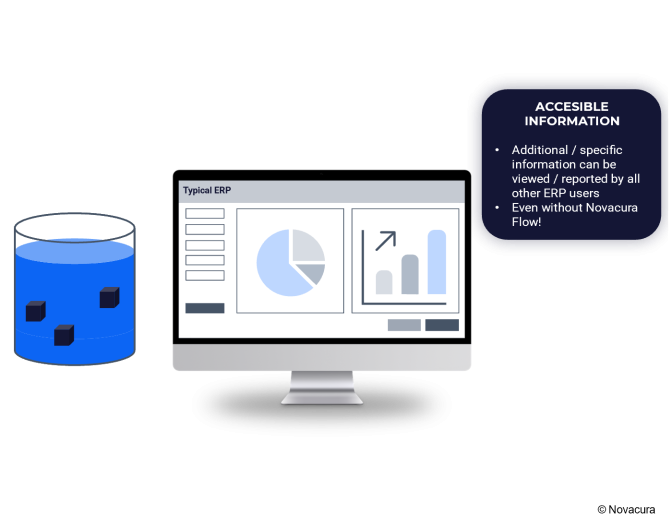
How we achieve that level of integration
Novacura provides business solutions in the form of customized mobile applications that are deeply integrated with the ERP system, showcasing practical ERP integration capabilities used in day-to-day operations. Mobile applications can be built on the Novacura Flow platform by employees without high programming skills to meet business requirements based on business and customer demand.
Novacura release these functionalities to companies within its solutions:
- Custom objects and attributes – applications built on the Novacura Flow platform can contain any number of additional objects and attributes, as well as new system transactions that are not originally available in the ERP system. To keep ERP as a primary source of all information, this additional information must be somehow added to the ERP database. We achieve that by creating custom fields and custom objects directly in the ERP. These new objects are contextually linked with the basic ERP objects, which makes them accessible for ERP users.
For users, this means the ability to create additional transactions in Novacura Flow that can still be accepted in the existing ERP system without costly modifications in the ERP.
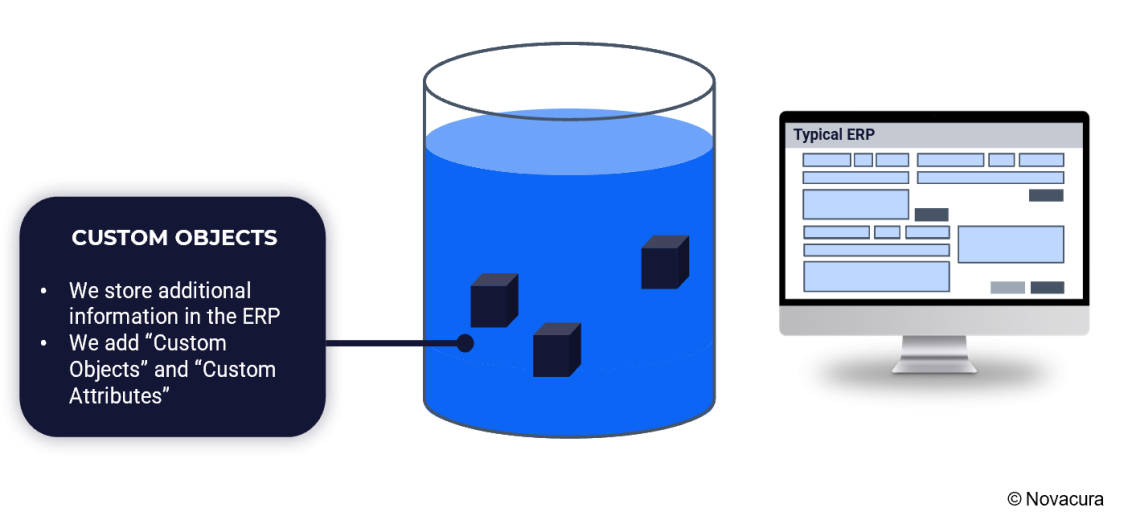
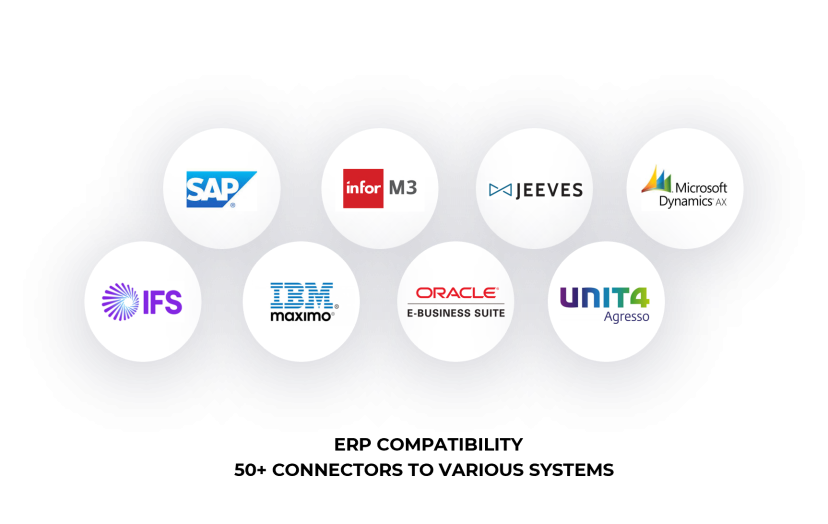
- NO Code connector concept – Novacura connectors are easy to use. For example, the latest IFS Odata connector supports “no code” philosophy and guides user on how to retrieve data from the ERP / how to save it to the ERP (see snapshot below).
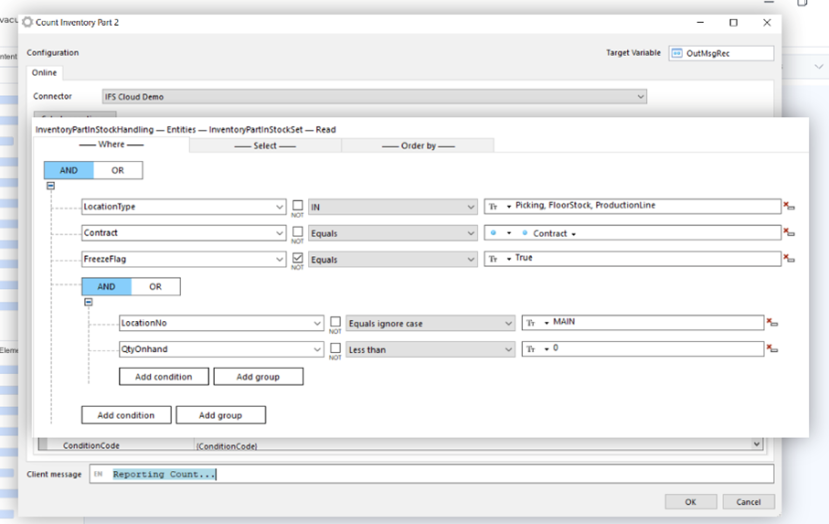
The true benefit - the ability to optimize your business
As stated above, thanks to the “Deep ERP Integration”, new applications built with Novacura Flow don’t negatively affect the ERP. Standard processes that run around ERP will not be changed by the implementation of Novacura applications, because all the data processed in Novacura will still be accessible in the ERP. This has a huge positive result: companies may harmlessly add more and more Novacura applications, without affecting other existing processes. Other users (not involved in Novacura implementation) can still use their standard applications, they will not notice any difference in their daily work when another Novacura application will be deployed.
Thus, since there are no negative consequences of implementing Novacura applications, companies can continuously add these applications, implementing pragmatical “continuous improvement” philosophy. By doing that, they will optimize their processes, taking advantage of the efficiency, flexibility and mobility of Novacura Flow.
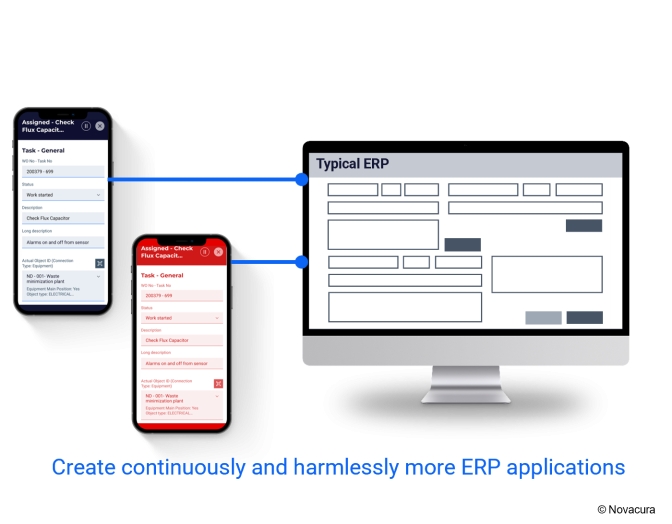
Summary
Many companies offer their business solutions without deep ERP integration. This misconception should be avoided by companies that want to cover their needs today and in the future. These companies should consider a more comprehensive solution than a typical application provider.
Novacura offers business solutions that help with effective long-term planning, corporate stability, and return on investment. We offer organizational tools that align with strategy, are integrated with ERP, and lead to high performance. We have more than 220 customers in various industries around the world. We offer proven solutions that can be combined with the most popular ERP systems. Contact us today and see what we can do for your company.


